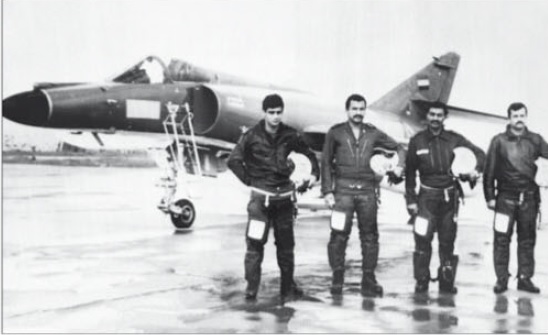흥미로운 이란공군 F-14A 더블에이스 Mazandarani 대령 인터뷰
FELIX | 2016-06-29 00:45:50
조회 5041 | 추천 0 | 다운로드 0
David: What are the main indigenous modifications made to the IRIAF F-14s:
Col. M: Except the heavy overhauls that have been done on this magnificent aircraft since 1979 by our own technicians, the only indigenous modifications are the replacements for the ECMD/ECCM systems, radar warning receivers and installation of new jammers. But above all, making our F-14s’ AWG-9/15 systems compatible with the US made ‘Hawk’ and Russian built ‘R-73E Archer’ missiles was done in Iran without any foreign assistance. Another home built modification done on the Iranian F-14s, despite their lacking the B-Tape (enabling the F-14s to be bomb-cats) was to actually enable Iranian F-14s to carry variety of ‘iron bombs’ for air to ground roles.
F-14에서 아처운용 가능하답니다... 알라모 장착 사진은 올라온바가 있지요.. 오히려 팬텀이 아처 장착사진이 있습니다
F) David: Sir, how many flying hours do the Iranian pilots log on average every year?
Col. M: The average flight hours for each and every F-14 driver and GIB (guy in the back) is somewhere between 550 to 600 hours per year. The airframes go through 2500 to 2800 hours of flight time per year as well.
F-14 조종사와 GIB(RIO인듯 합니다)의 연간 비행시간이 무려 550시간에서 600시간??..
너무 많은게 의심스러울 정도네요 우리나라의 경우 130시간정도고 공중급유하는 미공군도 300시간 안팎이지 않나요??
걸프해의 항모에서 작전하던 미해군 조종사들의 경우 매 소티마다 8시간이상 비행이니 저정도 가능할지 몰라도..
그리고 F-14가 연간 2500시간에사 2800시간이나 비행을 하다니 365로 나눔 하루 몇시간인지..
I) David: Have you ever encountered any US fighters or military planes in the international air space?
Col. M: Yes. Through out the Iran-Iraq war in the 1980s, I had numerous encounters with US and Persian Gulf region area air forces’ planes (mostly Saudis) during my own armed patrols. In one encounter, I was vectored towards a US navy fighter that had apparently crossed into Iran’s air space but the USN jet turned away after it was given a radio warning. On other occasions, I encountered Saudi based USAF AWACS aircraft. But both sides would resort to ‘radio warnings’ alone to warn each other. In an interesting encounter, I had intercepted a Royal Saudi Air Force’s F-15A in the later stages of the war. As I was getting ready to lock on and engage the Saudi F-15A Eagle, I was ordered to disengage by our ground control radar.
J) When were your first and last air-to-air combat kills?
Col. M: My very first air-to-air combat kill came on Sept. 17th 1980, using the AIM-54A Phoenix (the first use of Phoenix in combat in its history) downing an Iraqi air force’s “MiG-23 Flogger” that had crossed into Iran’s air space days before the official start of hostilities. My last air-to-air kill took place in December 1986 using the air-to-air version of MIM-23 Hawk missile (firing an AIM-23C Sedjil for the first time in combat) bringing down a French built “Super Étendard” over the northern Persian Gulf region.







 1
1


댓글 [4]
이라크 공군을 상대로한 전적도 그렇고,
봉쇄당한 상태에서 F-14를 저정도로 운용했다면 승리입니다.
raptor79 | 2016-06-29 | 추천 1
이라크 공군을 상대로한 전적도 그렇고,
봉쇄당한 상태에서 F-14를 저정도로 운용했다면 승리입니다.
FELIX | 2016-06-29 | 추천 0
소아범 | 2016-06-29 | 추천 0
efking | 2016-06-29 | 추천 0
미해군처럼 제공요격기로서뿐만 아니라, 때론 긴 레이더 탐지거리를 이용해 간이 조기경보기로도 사용하고
또 때론 많지는 아니지만 대지상 공격까지... 참 징그럽게도 빼먹는것 같습니다.